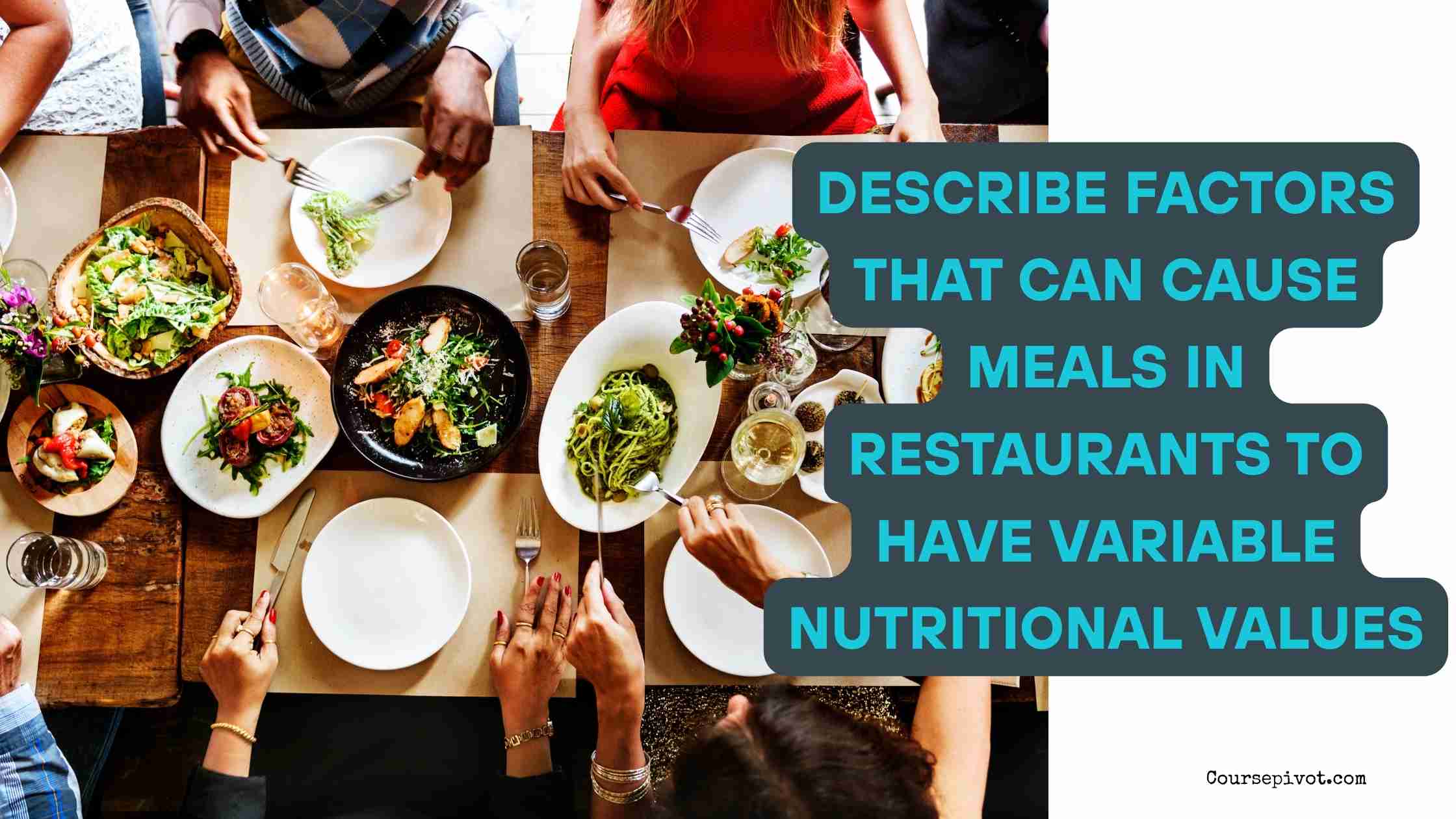
Factors That Can Cause Meals in Restaurants to Have Variable Nutritional Values
Ever ordered a salad thinking it was the healthiest choice—only to feel suspiciously full and sluggish afterward? I’ve been there. It made me realize something many of us overlook: restaurant meals can have wildly variable nutritional values.
Table of Contents
When we eat out, we often assume what we’re eating matches the menu’s claims. But in reality, that’s rarely the case.
So, what causes this variability in restaurant meals?
Why can the same dish be relatively healthy one day and a calorie bomb the next?
Let’s break it down.
Whether you’re counting calories, watching your sodium, or just trying to eat cleaner, understanding these hidden factors will change how you view your next plate of food.
- Read our blog on 20 Budget-Friendly Meal Ideas for College Students 2025
Portion Sizes Are Rarely Standardized
One of the biggest factors that influence nutritional values in restaurants is inconsistent portion sizes.
Unlike packaged foods, restaurants don’t always weigh or measure ingredients precisely. A “grilled chicken sandwich” might have:
- 3 oz of chicken on Monday
- 5 oz on Thursday
- Extra oil on Saturday
That difference alone can add hundreds of calories or grams of fat without anyone realizing.
In my experience, even ordering the same dish at the same restaurant doesn’t guarantee you’re getting the same meal.
Variations in Ingredients and Cooking Techniques
Chefs might follow a general recipe—but they also cook by feel. That means:
- One cook may drizzle more oil or butter.
- Another might salt more aggressively.
- Vegetables may be sautéed, steamed, or overcooked, all of which impact nutrients.
Even things like meat fat content or cheese type can vary depending on what’s available that day.
The truth? There’s no universal kitchen playbook. What’s “one serving” to one cook might be double to another.
- Read our blog on 10 Reasons Why I Stopped Intermittent Fasting
Hidden Fats and Oils
Here’s where things really sneak up on you.
- Butter to grease the pan.
- Oil brushed on bread before toasting.
- Cream added for richness.
These hidden fats and oils can completely change the nutritional value of your restaurant meal—especially in dishes that don’t look heavy at all.
It’s frustrating, honestly. A “light stir-fry” could turn into a calorie bomb if it’s swimming in sesame oil or soy sauce.
Sauces, Dressings, and Extras
I can’t count how many times I’ve forgotten to ask for dressing on the side—and instantly regretted it.
Many meals are doused in:
- Cream-based sauces
- Sweet glazes
- High-sodium marinades
- Sugar-loaded dressings
These ingredients can double the fat, sugar, or sodium in your meal—and are often not accounted for on the menu’s calorie listing (if there is one at all).
Substitutions and Special Orders
Even when you ask for healthy substitutions, the nutritional outcome can vary:
- You swap fries for a side salad… but the salad has cheese, croutons, and full-fat dressing.
- You order grilled instead of fried… but they still brush it with butter for taste.
What I’ve learned is that even well-intentioned changes can introduce new nutritional variables you didn’t account for.
Restaurant Type and Food Philosophy
Not all restaurants have the same food priorities.
- Fast-food chains may use pre-portioned ingredients—but those are often ultra-processed.
- Fine dining chefs tend to prioritize flavor over calorie counts.
- Farm-to-table spots may offer fresher ingredients—but portion sizes may still be large.
So depending on where you eat, the nutritional variability of meals in restaurants can be dramatic.
Lack of Labeling Regulations
Unlike packaged grocery items, most restaurants aren’t required to list accurate nutritional info—except some larger chains.
Even then, those numbers are averages.
That means:
What’s listed on the menu isn’t always what lands on your plate.
As someone who likes to track what I eat, this realization changed how I order. I now assume the actual meal might be significantly different than advertised.
- Read our blog on 5 Reasons Why My Car Is Overheating
What You Should Know Before Your Next Meal Out
Ultimately, there are many factors that can cause meals in restaurants to have variable nutritional values, including inconsistent portion sizes, varying ingredient quality, added fats or oils, chef technique, and hidden extras like sauces and dressings.
Even healthy substitutions can introduce new variations. As someone who’s tried to eat mindfully while dining out, I’ve learned that restaurant food isn’t always predictable—even when it seems healthy. The best strategy is to stay aware, ask questions, and when possible, request modifications you can control.
The causes of nutritional variability include portion inconsistency, recipe adjustments, cooking methods, hidden fats, and the restaurant’s food philosophy—all of which can impact your health goals more than you realize.
Cite this article
You can copy and paste your preferred citation format below.
Martin, L. & Arquette, E.. (2025, May 24). Factors That Can Cause Meals in Restaurants to Have Variable Nutritional Values. Coursepivot.com. https://coursepivot.com/blog/describe-factors-that-can-cause-meals-in-restaurants-to-have-variable-nutritional-values/



